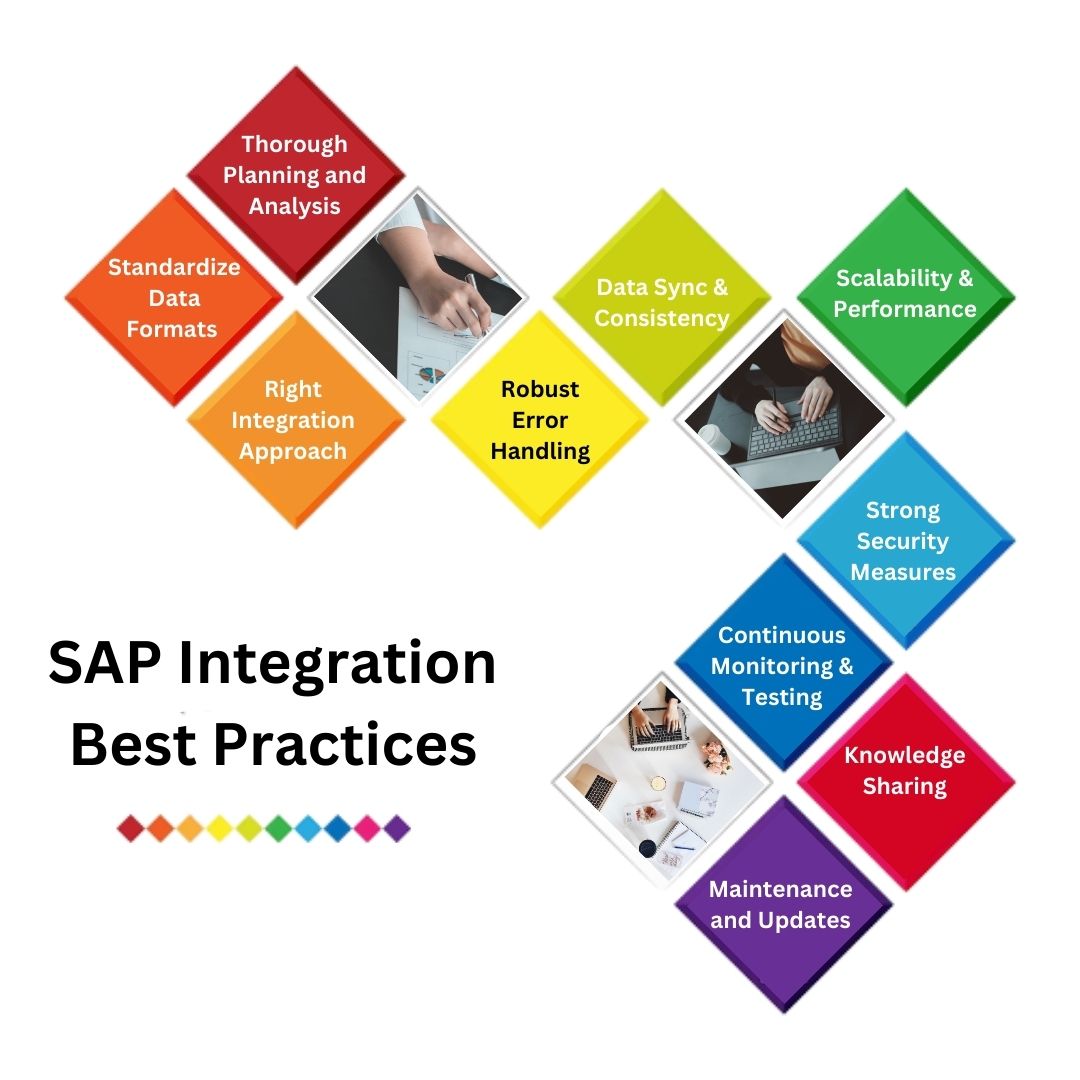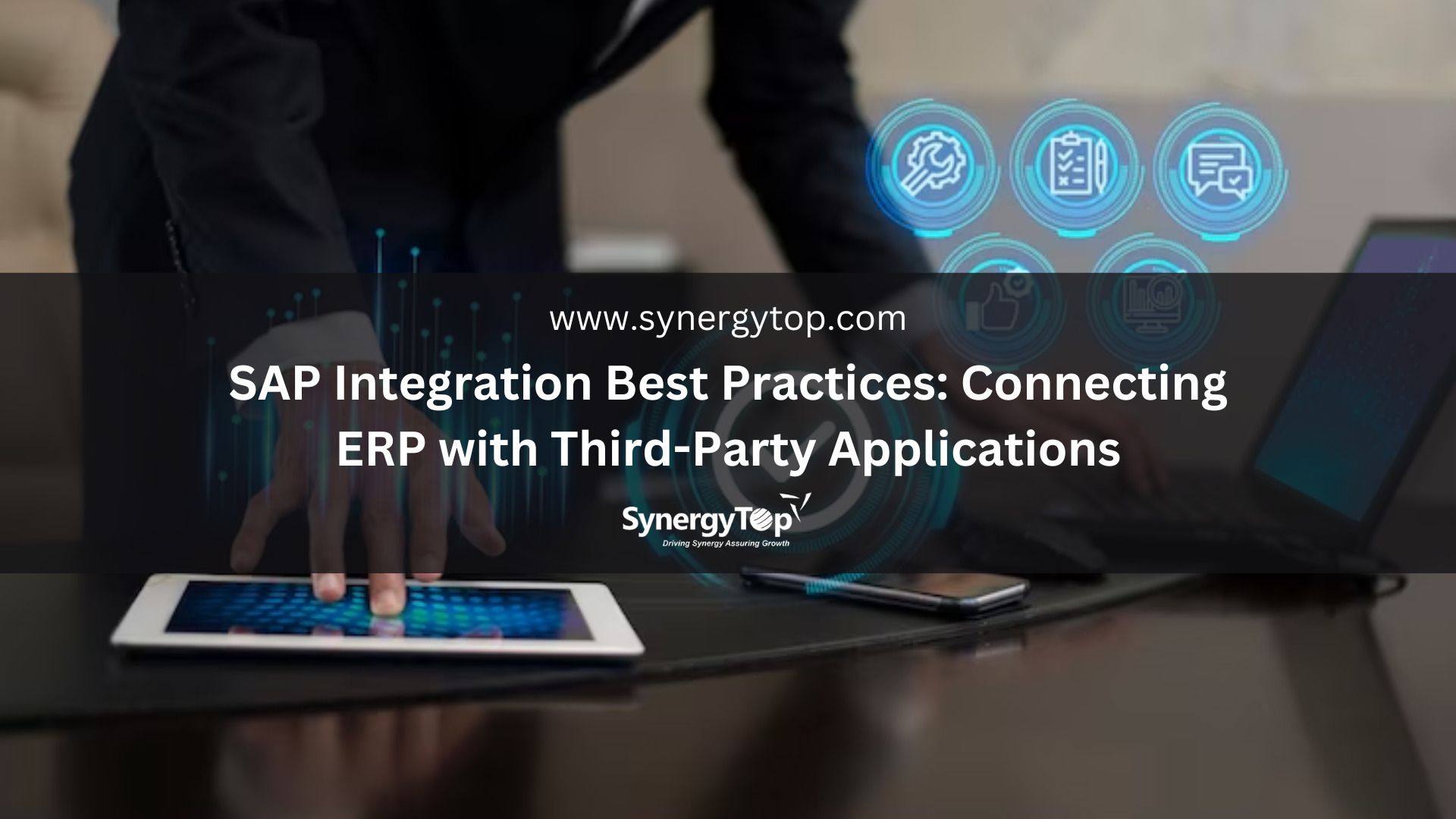Embracing a substantial 24% share in the global ERP market, SAP ERP stands tall as a driving force in the business world. Its influence spans across 180 countries, where it’s trusted by a remarkable 425,000 customers. These impressive numbers tell a story of SAP’s growing importance – a trend that’s only natural, given the array of benefits it brings.
In the realm of organizational streamlining, SAP (Systems, Applications, and Products) shines brilliantly. It’s more than just software; it’s a dynamic solution that empowers businesses with comprehensive tools for Enterprise Resource Planning (ERP).
Yet, as SAP’s presence expands, the significance of harmonizing it seamlessly with third-party applications takes the spotlight. This need for integration is a testament to the collaborative future that businesses are crafting, where SAP plays a central, unifying role.
In this blog post, we will delve into the best practices that ensure a smooth and effective integration of SAP with third-party solutions, allowing businesses to harness its full capabilities.
Before we begin with the best practices, let’s explore…
The Increasing Relevance of SAP Integration
As more businesses realize how well SAP works, they’re also discovering the perks of using it alongside other apps. It’s like these apps team up effortlessly to share info and features. Here are five examples that show why mixing SAP with other solutions matters:
1. Efficient eCommerce with SAP
When SAP teams up with e-commerce platforms, it’s like a dynamic duo taking charge of inventory, orders, and understanding customers. This combo makes shopping smoother.
2. Better CRM with SAP
SAP and Customer Relationship Management (CRM) systems join forces to give a complete view of customer interactions. This teamwork improves sales plans, speeds up support, and builds customer bonds.
3. Smoother Supply Chains
Blending SAP with supply chain tools is like having skilled partners for tracking inventory, predicting demand, and smart procurement. This mix brings top-notch inventory control and cost management.
4. HR and Payroll Harmony
Merging SAP with HR and payroll systems simplifies staff data and payroll tasks. It’s like an all-in-one solution for managing the workforce.
5. Supercharging Business Insights
Fusing SAP with analytics tools empowers businesses to uncover valuable info from their data. This collaboration guides smart decisions for strategic future plans.
Overcoming Integration Challenges
While enjoying the significant advantages of SAP integration, the path forward isn’t free of challenges. There are a number of common obstacles that can impede a smooth integration process. In this section, we explore five common problems that organizations frequently face when merging SAP with third-party applications:
1. Navigating Complex Data Structures
SAP’s intricate data structures can pose challenges in aligning them with those of third-party applications. This misalignment can lead to confusion during the critical stages of data mapping and transformation.
2. Tackling Data Inconsistencies
Discrepancies between the data stored in SAP and external systems can give rise to errors, and redundancies, and can act as roadblocks in efficient decision-making processes.
3. Addressing Scalability Concerns
With the expansion of business operations, integration frameworks must gracefully handle the surge in data volumes and user interactions. It’s imperative to ensure that this growth doesn’t come at the cost of system performance.
4. Ensuring Security
The integration of SAP with external systems opens the door to potential security vulnerabilities. This underscores the need for robust authentication, data encryption, and meticulous access controls to safeguard sensitive information.
5. Navigating Maintenance Complexities
Updates or alterations made in one system can inadvertently disrupt the flow of integration, necessitating vigilant monitoring and timely maintenance to uphold the integrity of the entire system.
In overcoming these challenges, organizations pave the way for a harmonious synergy between SAP and external applications, unlocking the full potential of their integrated ecosystem.
Essential SAP Integration Best Practices

To navigate the intricacies of SAP integration and achieve a seamless connection between SAP and third-party applications, organizations should follow these ten best practices:
1. Thorough Planning and Analysis
Alright, let’s start by laying the groundwork. Before you dive headfirst into SAP integration, take a moment to understand your business goals and how data flows around. It’s like scouting the terrain before a big adventure. This upfront analysis helps you dodge those nasty surprises later and keeps your integration ship sailing smoothly.
2. Standardize Data Formats and Definitions
Think of this as speaking the same data language. You don’t want SAP and your external apps fumbling over how to interpret data. By getting everyone on the same page with uniform data formats and definitions, you’re making sure data moves effortlessly, like a well-rehearsed dance routine.
3. Choose the Right Integration Approach
Okay, here’s the deal – not all integrations are created equal. It’s like choosing the right tool for the job. Depending on what you’re doing, you might want batch processing, real-time sync, or even playing the API card. Picking the right strategy is like hitting the bullseye – it keeps your data flowing without missing a beat.
4. Implement Robust Error Handling
Sometimes things go sideways. And that can actually happen with your SAP integration as well. That’s why you need a solid plan for when stuff breaks. Having a way to deal with errors keeps your data from getting tangled up and ensures that everything keeps running smoothly.
5. Prioritize Data Synchronization and Consistency
Imagine this: your SAP data and the data in your other systems are doing a synchronized swimming routine. You want them to be in perfect sync, whether it’s happening in real-time or at set intervals. This sync-up ensures everyone’s on the same page, making sure your decisions are on point and your customers are happy campers.
6. Focus on Scalability and Performance
Think of this as preparing for a marathon, not a sprint. Your integration setup should be ready to handle more data and action as your business grows. It’s like ensuring your favorite band’s stage can handle a bigger crowd without missing a note.
7. Establish Strong Security Measures
Locking your doors at home is a no-brainer, right? The same goes for your data. Integrate with confidence by setting up solid security – like having bouncers at the club entrance. This keeps your data safe from any shady characters trying to sneak in.
8. Continuous Monitoring and Testing
Just like keeping an eye on your garden, you need to watch how your integration is growing. Imagine having a control room where you can spot any hiccups or slowdowns in real-time. It’s like catching a hiccup before it turns into a full-blown sneeze.
9. Documentation and Knowledge Sharing
Ever tried following a recipe without the instructions? Documenting your integration journey is like leaving breadcrumbs for others to follow. It’s about sharing the ‘how-to’ so that others can jump on the integration train without any detours.
10. Regular Maintenance and Updates
Remember when you had to give your bike a tune-up? Your integration setup needs a bit of that love too. Regular check-ups, updates, and patches keep everything running in tip-top shape, just like giving your car an oil change to keep it humming along.
The Importance of Expert SAP Implementation Partners
Now these best practices offer a solid foundation for successful SAP integration.
But the complexity of the process demands a bit more finesse.
That’s where experienced SAP implementation partners come in.
For starters, SAP implementation experts really know their stuff. They’ve been around the block, understanding SAP’s ins and outs, integration challenges, and the best solutions to tackle them.
So when issues pop these experts swoop in, get to the heart of the problem, and fix things up fast. All so that your business doesn’t skip a beat.
SynergyTop: Your Trusted SAP Integration Partner
With a decade of experience under our belt, SyneryTop is a trusted SAP partner you can rely on. Our team has helped countless clients across various industries achieve seamless SAP integration.
By teaming up with us, your business can unlock the full potential of SAP integration, boosting efficiency and setting the stage for growth.
Just connect with us for a consultation and find the best ways to integrate SAP with third-party applications today!
















